Within the early Nineties, a bunch of scientists had a dream: a brand new kind of telescope that will push astronomy, astrophysics, and imaging expertise additional than ever earlier than. It might be a tool that would see big swaths of the sky and assist unravel the thriller of darkish matter. 30 years later, that dream is a actuality.
What began as a tough sketch took type over the subsequent decade and in 2003, the LSST Company was shaped as a non-profit that will assist the challenge. In 2007, the LSST acquired essential monetary backing from Charles Simonyi and Invoice Gates within the type of $20 million and $10 million, respectively, for use to assemble the telescope’s mirror array.
It was at this level that the dream began to really feel “actual” to these concerned.
A Decade-Lengthy Journey
In 2010, the challenge was given federal funding from the Nationwide Science Basis (NSF) and the Division of Vitality (DOE), and building of the telescope was capable of start underneath the identify Massive Synoptic Survey Telescope (LSST).
![]()
In 2015, floor was damaged in Cerro Pachón, Chile, the place the large telescope housing for the large digicam could be constructed. Over the subsequent few years, particular person elements of your complete observatory system, together with the digicam, could be constructed in numerous elements of the world. The development of the digicam started in earnest in California. The metal telescope mount construction got here collectively in Spain. The secondary mirror was assembled in New York.
In 2018, the telescope mount and each mirrors got here collectively in Chile. In December 2019, the US Congress confirmed a brand new identify for the telescope: the Vera C. Rubin Observatory, named after the pioneering American astronomer who made vital contributions to astronomy and astrophysics.
![]()
“Rubin Observatory was the primary main, publicly-funded astronomy facility in the US to be named after a girl,” the observatory’s group says.
Whereas the observatory obtained a brand new identify, the acronym LSST caught and the challenge would proceed with it underneath the identify Legacy Survey of Area and Time.
Though main items of the telescope had been being assembled collectively as early as 2018, it will be practically six extra years earlier than what’s arguably an important side of the system — the three,200-megapixel LSST digicam — was accomplished. That finally happened on April 3, 2024.
Enormous Doesn’t Even Start to Describe the LSST Digital camera
I and my colleagues Chris Niccolls and Jordan Drake got the unbelievable alternative to go to the SLAC Nationwide Accelerator Laboratory, the place the now-completed LSST digicam has been for the final decade. Earlier than it’s packed up and punctiliously shipped to Chile, the three of us had been capable of spend a number of hours with it alongside two of the engineers who had been a part of its building.
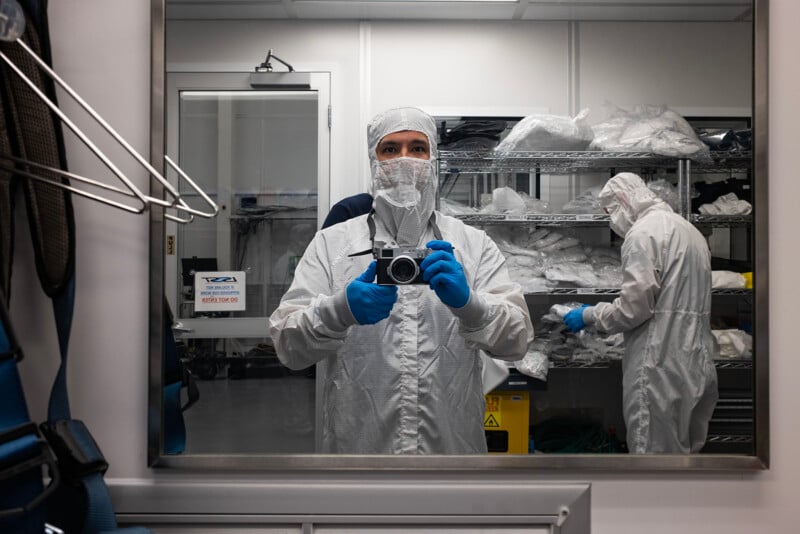
That is, in brief, the most important digital digicam ever constructed. Earlier than it’s even put in into the observatory, which is very large, the digicam weighs a whopping 3,000 kilograms. That’s equal to 1,500 Nikon 58mm f/0.95 Noct lenses (Chris’s favourite weight conversion).
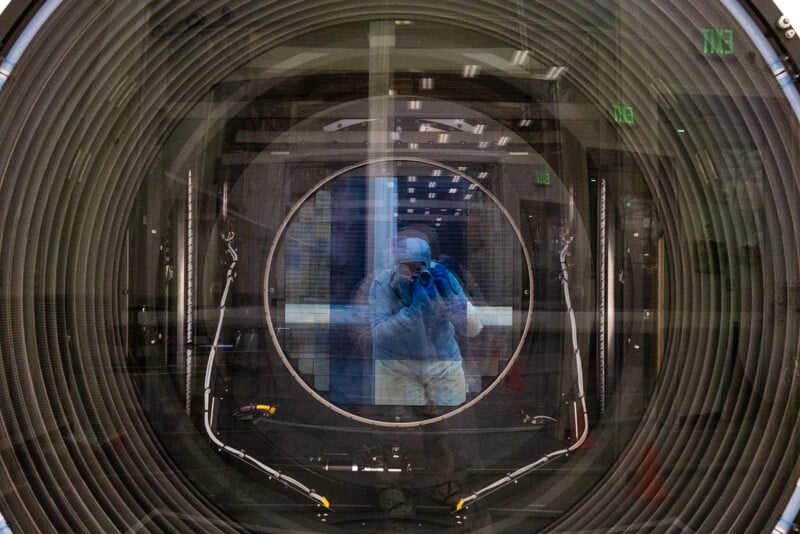
It’s so enormous due to the large decision it’s able to capturing. The imager is made up of 21 rafts every of which holds 9 CCD sensors that make up the array. To offer context, one single sensor will {photograph} sufficient of the sky to include tens of 1000’s of galaxies and stars at one time — and there are 189 current.
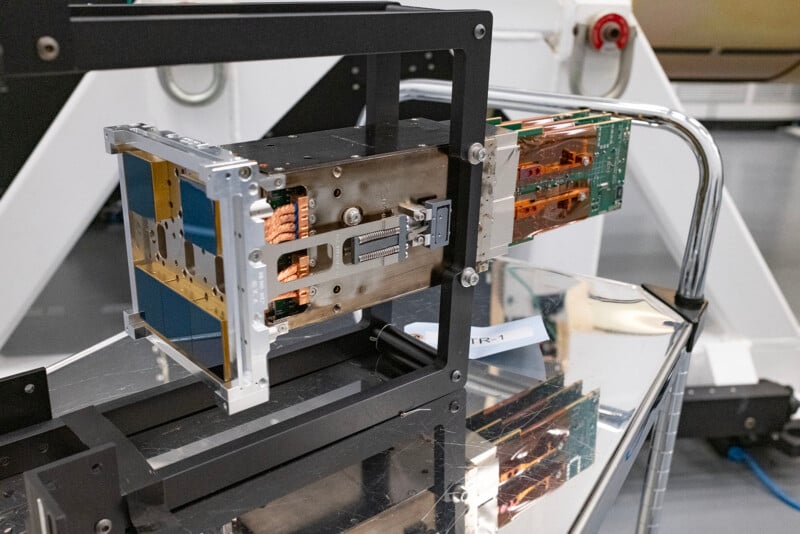
These sensors might solely have about 16 megapixels of decision, however the pixels are a lot bigger than these discovered on shopper cameras. Simply one of many LSST’s sensor items dwarfs the one discovered within the Hasselblad X2D 100C, one of many highest-resolution medium-format digital cameras at present obtainable.
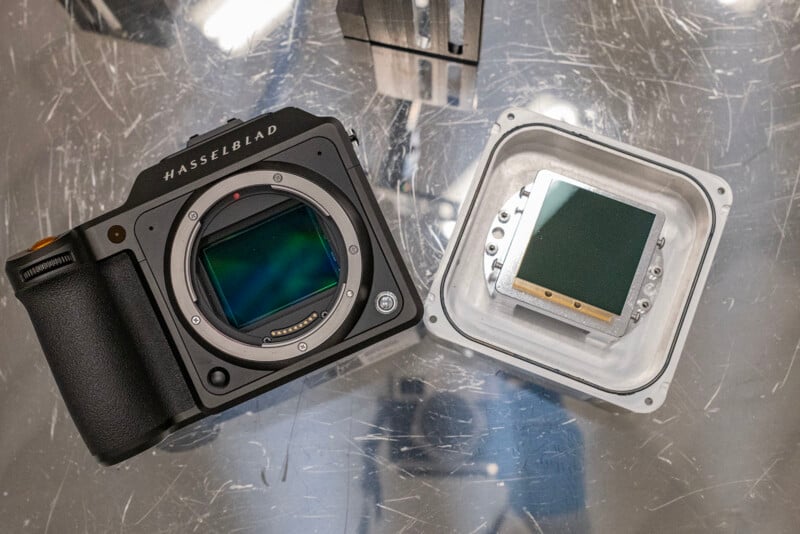
The CCD chips on the sensor are designed to be so delicate that ambient gentle recording gentle is just not potential as it’s too saturated. Whereas setting up the LSST, numerous sensors had been thrown out as they didn’t meet the mandatory specs. For instance, the sensor needed to be inside 4 microns of excellent flatness as a way to go. As a reference, the human hair is on common 70 microns thick.
“One of many major technical challenges with assembling this digicam was putting in the sensor assemblies. I created a slew of ideas however didn’t really feel nice about any of them. So we finally had a brainstorming session and that led to an thought I hadn’t considered,” Travis Lange, LSST Digital camera deputy challenge supervisor and digicam integration supervisor says.
“The remainder of the method concerned creating the detailed design with a number of tolerance evaluation to make sure the mechanism used to put in the sensors had the mandatory accuracy.”
![]()
![]()
That flatness is achieved utilizing an array of ceramic carbon strengthened mounts together with three balls of various diameters to calibrate, mixed with the choice to shim the sensors themselves. Remarkably, the machining work was so exact that getting virtually excellent flatness was simpler than anticipated — one of many few occasions that may be mentioned of the digicam’s building.
Every sensor captures a 4,000 by 4,000 pixel space, with every pixel inside that being 10 microns in measurement. The diameter of the sensor space is 640mm throughout (about 25.2 inches) the roughly round array. Altogether, the LSST is able to capturing 3,200-megapixel photographs. The Subaru Telescope positioned on the Mauna Kea Observatory in Hawaii is the closest beforehand current digicam when it comes to measurement as it is just barely smaller bodily however has a sensor array that’s roughly half the dimensions of the LSST.
To raised put what the LSST can do into perspective, the animation under reveals the way it compares to another well-known programs (courtesy of Margaux Lopez):
The sensor array operates at a temperature of -100 levels Celsius (thanks to an enormous refrigeration unit that may each warmth and funky to take care of equilibrium) and, to keep away from condensation, does so in an entire vacuum. Sustaining that vacuum is itself a problem, and final 12 months a leak was found that took the group months to resolve.
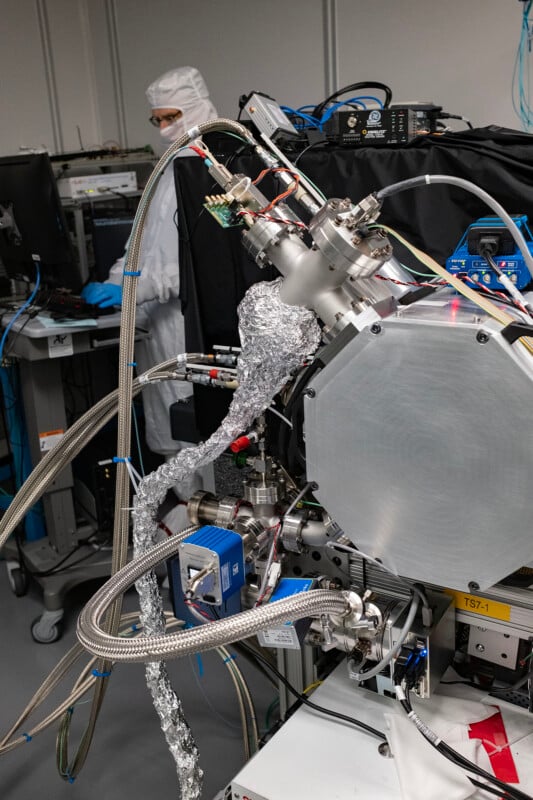
The sensor is simply half of the equation, in fact. The lens isn’t any much less spectacular, sporting a 3.5-degree diameter area of view, which interprets to a couple of 7.5 occasions wider area of view than the total moon within the evening sky. It has an equal aperture of f/1.23 and the 1.55 meter diameter of the entrance aspect makes it the most important on the planet.
![]()
“I anticipated the method of putting in the big lens meeting to be very tough as a result of it has six separate toes which have to be hooked up concurrently. We made plans for 3 folks to every handle two toes, and I believed managing that will be actually tough. However my paranoia was fortunately unfounded,” Lange says and factors to the photograph under exhibiting the method of set up.
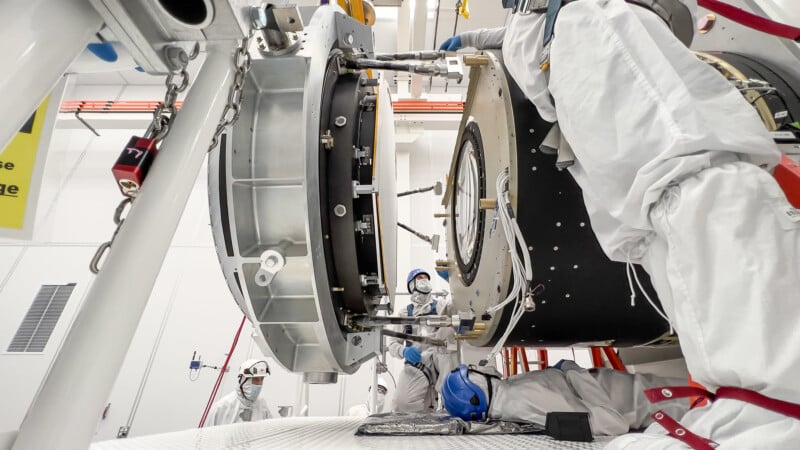
Between the lens array and the sensor is a large mechanical shutter that may fireplace as quick as 0.9 seconds when the sensor is absolutely revealed. It will possibly do a sliver shutter for sooner speeds (the place the 2 curtains are shut collectively and transfer throughout the aircraft of the sensor in unison) however virtually talking, a protracted publicity of 15 to 30 seconds per shot is taken into account the “nominal vary” that may really be utilized by scientists.
The decision of this sensor is extraordinary. If it had been aimed within the method of a conventional digicam, it might resolve a golf ball 15 miles away whereas additionally protecting a swath of the sky seven occasions wider than the total moon.
As enormous because the LSST is, it’s dwarfed by the dimensions of the total observatory that was custom-made for this digital digicam system. As you’ll be able to think about, this challenge took a gargantuan effort from an enormous variety of folks.

“There have been many engineering challenges and lots of setbacks however I feel one of the crucial difficult issues for me personally has been how lengthy the challenge has gone on. I form of anticipated to be onto one thing new by now, however I’m nonetheless engaged on this identical factor,” Margaux Lopez, a mechanical engineer on the LSST building group, says.
“Since I began engaged on this challenge in 2015 (my first engineering job after graduating from faculty), I’ve all the time been planning to take a 12 months or two off to go frolic within the mountains after this challenge is over and I form of thought I might be doing that by now however seems I’m nonetheless right here and I generally (usually?) surprise why. However I feel it’s in human nature to pursue discovery. The primary driver of this whole challenge is curiosity,” she continues.
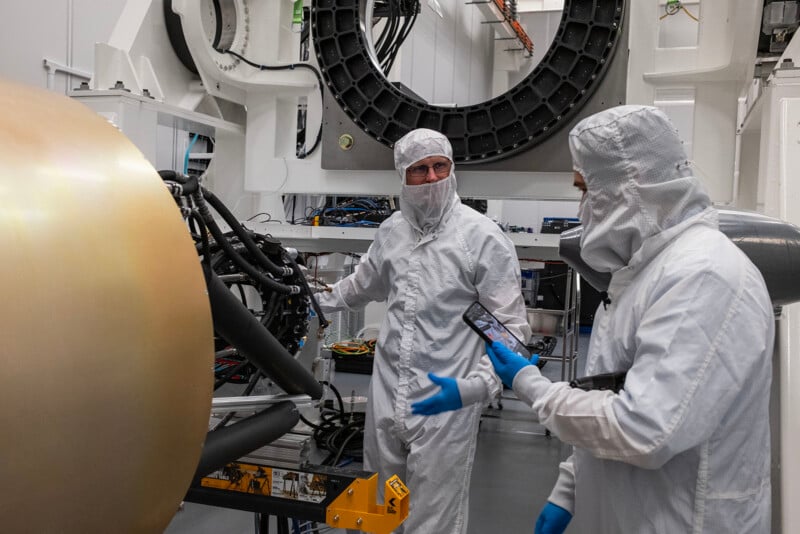
“Exploring the unknown, whether or not it’s a distant mountaintop or a far-away galaxy, is a elementary human want. Engaged on a scientific instrument that may assist us uncover extra about our previous and ourselves feels significant and thus well worth the decade of my life that I’ve devoted to it.”
Homeward Certain
Earlier than it could possibly do something, the LSST has to get from Stanford, California to the highest of a mountain in Chile. The digicam is extraordinarily fragile, which implies distinctive transport preparations are needed. The LSST will likely be inserted right into a specifically designed transport container that’s outfitted with shock absorbers and sealed towards dramatic modifications in temperature. After that, will probably be loaded onto a specifically chartered airplane earlier than being fastidiously, and slowly, pushed up the mountain.
“There are many methods wherein we might have issues earlier than the digicam will get put in on the telescope, from injury throughout transport to some inaccessible part struggling early lifetime failure. We’ve run into loads of points alongside the best way, and I’m certain we’ll come throughout others, however we have now an incredible group of devoted, clever individuals who have labored collectively to resolve many points throughout building,” Lange says.

“I’m most happy with the transport plan which I’ve put a number of work into during the last 5 years,” Lopez provides.
“I’m assured we’ll be capable to resolve any future points that we come throughout. Dangers can’t be fully eradicated, however we will spend effort and time on minimizing them as a lot as potential; therefore Margaux’s 5 years of repeatedly growing the transport plan!” Lange continues.
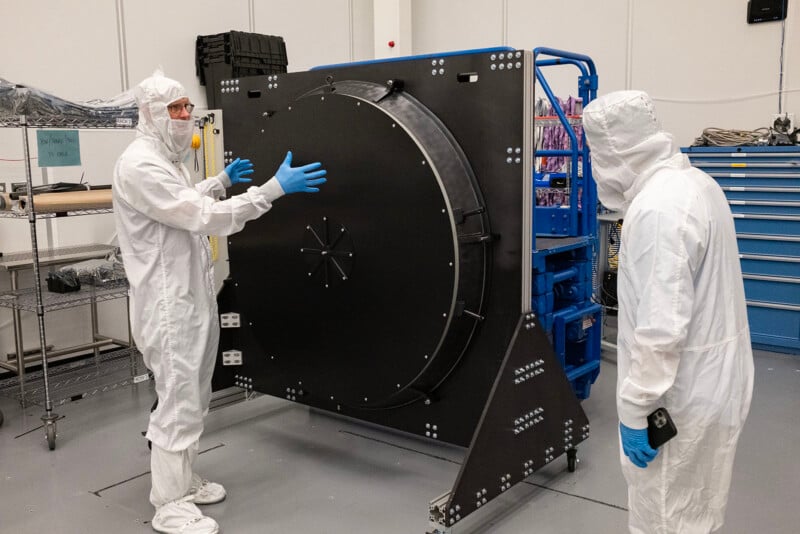
“I’m much less involved concerning the set up itself and just a little extra involved concerning the operation of the digicam after it’s put in. We’ve got by no means operated the digicam at altitude or within the observatory circumstances with the telescope utilities and we’ve executed a really thorough job of testing as a lot of these issues as we will forward of time (each with the commissioning digicam that we despatched to Chile early and by recreating summit circumstances within the lab at SLAC) however there are all the time going to be issues which are surprising,” Lopez explains.
“That being mentioned, we’ve had plenty of issues pop up that we simply didn’t anticipate within the final 12 months and we have now an extremely succesful group in place to react to something that goes incorrect. I don’t assume it’s truthful to say that issues received’t go incorrect however I do assume it’s truthful to say that we can repair or mitigate them rapidly.”
The Mission of the LSST
The LSST will likely be used to discover the sky en masse, learning celestial our bodies and their relationship with one another and the way they’re distributed. It would additionally try to deal with the mysteries of darkish matter and the way it’s distributed all through the universe. Count on the detection of asteroids, their location, and their motion over time.
Over the course of the 10-year survey, the LSST will spend time capturing every a part of the southern sky greater than 800 occasions which can enable scientists and astronomers to create a completely dynamic film of the universe. Primarily, the LSST will likely be capturing a 10-year timelapse and all that information will likely be obtainable to the scientific group to additional the information of the universe.
Lopez says that the easiest way she has discovered to explain the objective of the LSST to the typical particular person is that it’s simply making an attempt to collect as a lot information as potential unexpectedly.
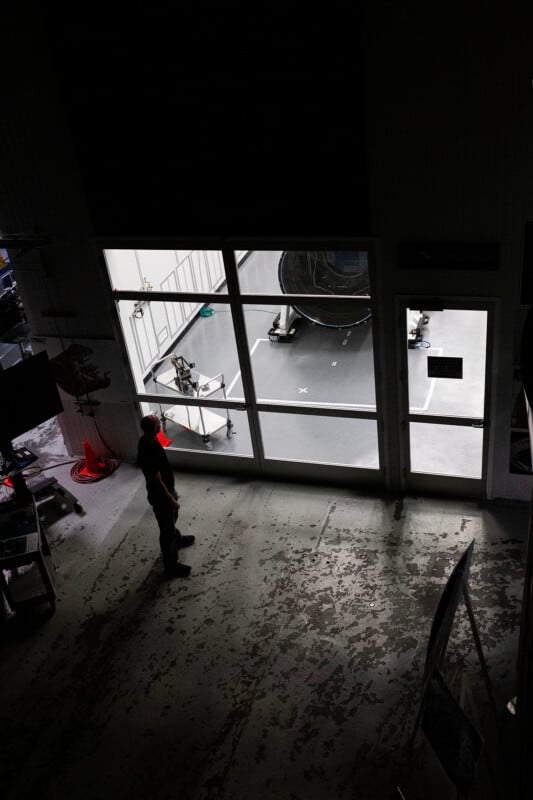
“I’ve discovered that this tends to resonate: discovering something attention-grabbing in area is much like discovering a needle in a haystack, so our objective with this challenge is just not essentially to instantly predict precisely the place the needles are or what sort of needles we’d discover, however as a substitute to gather as many haystacks as we will to extend the chances of discovering one thing new. The designs of this telescope and this digicam are targeted on gathering an extremely great amount of information, and we’re certain to seek out some attention-grabbing needles in a cosmic-sized haystack,” she says.
“I’m enthusiastic about what we’re going to seek out in our cosmic yard. The little cartoon fashions of our photo voltaic system do a disservice to how unbelievably huge it’s, and the way little we really know concerning the tens of millions of objects in it. Will one of many objects within the Kuiper Belt or the Oort Cloud get reclassified as a planet? Possibly!” Lange tells us.
“It might be good to find some aliens as a result of then hopefully folks will cease asking me whether or not we’re going to seek out aliens with this instrument or not,” Lopez says, laughing.
“However extra realistically, I feel that there are seemingly phenomena in area that humankind has by no means witnessed as a result of we’ve by no means been capable of take photos at this depth and right now scale earlier than, and discovering one thing that we’ve simply by no means seen earlier than could be fairly freaking cool.”
Picture credit: Except in any other case famous, photographs by Jaron Schneider for PetaPixel





